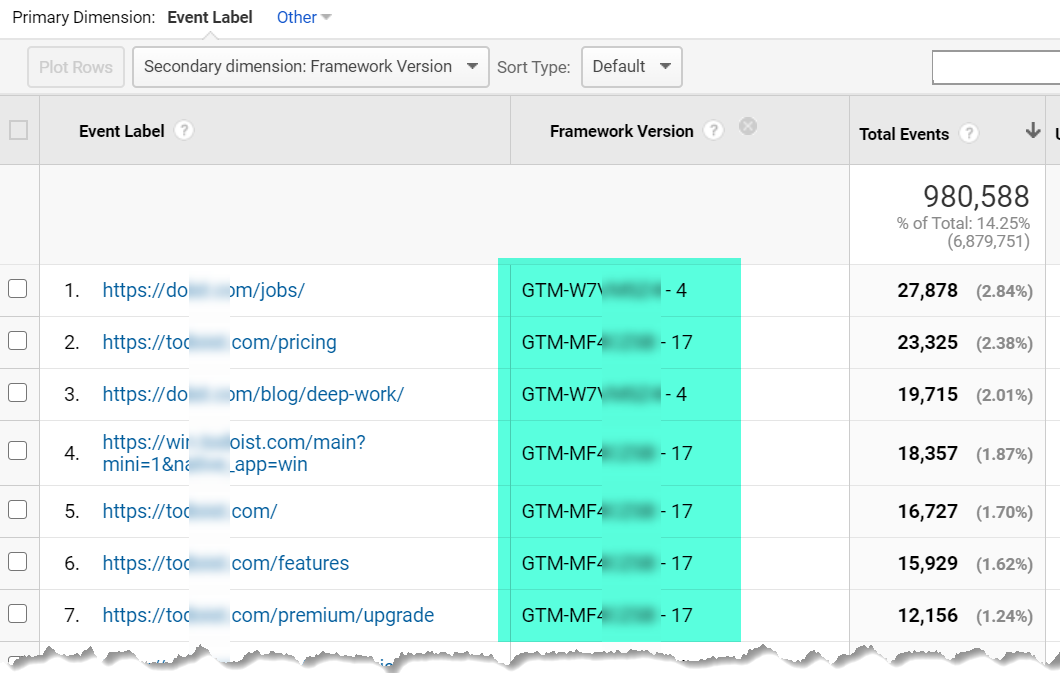Open Advanced Insights with Google Analytics Secondary Dimension Devices
Open Advanced Insights with Google Analytics Secondary Dimension Devices
Blog Article
Unlocking the Power of Second Dimension Analytics for Improved Data Insights and Decision-Making
In the world of data analytics, primary dimensions typically take the spotlight, yet real depth of insights lies within the world of second dimensions. These additional data points supply a nuanced viewpoint that can brighten partnerships and patterns not readily obvious initially glance. By using the power of additional measurement analytics, companies can introduce surprise patterns, uncover correlations, and remove more significant final thoughts from their information. The capacity for enhanced decision-making through the application of these secondary measurements is huge, guaranteeing a deeper understanding of intricate information sets and leading the way for even more enlightened calculated selections.
Importance of Second Dimensions
Checking out the importance of additional dimensions in analytics unveils the hidden layers of information insights essential for informed decision-making in various domains. Second measurements offer a much deeper understanding of key information by supplying additional context and perspectives. By integrating second dimensions right into analytics, organizations can remove a lot more extensive and nuanced understandings from their datasets.
One trick significance of secondary measurements is their capacity to segment and categorize main data, permitting a much more thorough analysis of certain parts within a dataset. This segmentation allows services to determine patterns, patterns, and outliers that might not be evident when considering the information overall. Furthermore, second dimensions help in uncovering correlations and dependencies in between various variables, causing more precise forecasting and predictive modeling.
In addition, secondary dimensions play an essential role in improving information visualization and reporting. By adding second measurements to visualizations, such as charts or charts, experts can develop a lot more informative and helpful depictions of information, promoting better communication of searchings for to stakeholders. On the whole, the assimilation of additional dimensions in analytics is important in opening the complete possibility of data and driving evidence-based decision-making.
Secret Benefits of Making Use Of Additional Dimensions
Making use of additional dimensions in analytics uses companies a tactical advantage by augmenting the depth and granularity of information understandings. One crucial benefit of including additional measurements is the capability to sector and filter data, permitting for a much more detailed evaluation of particular facets within a dataset. This segmentation allows companies to get a more nuanced understanding of their target market, performance metrics, and other important data factors. By exploring information utilizing second dimensions such as time, place, gadget kind, or individual demographics, organizations can uncover patterns, fads, and connections that might otherwise remain hidden.
Additionally, the usage of secondary measurements improves the context in which primary information is interpreted. It supplies a much more thorough view of the partnerships between different variables, allowing companies to make enlightened decisions based on an extra all natural understanding of their information. In addition, secondary dimensions promote the recognition of outliers, anomalies, and areas for optimization, inevitably causing much more effective techniques and enhanced end results. By leveraging secondary dimensions in analytics, organizations can harness the complete capacity of their information to drive far better decision-making and achieve their service purposes.
Advanced Information Evaluation Methods
A deep study sophisticated information analysis strategies exposes advanced techniques for extracting beneficial understandings from complex datasets. One such strategy is artificial intelligence, where algorithms are employed to identify patterns within information, predict results, and make data-driven choices. This approach permits for the automation of logical version building, allowing the processing of huge volumes of data at a faster pace than typical methods.
Another advanced method is predictive analytics, which makes use of statistical formulas and device discovering methods to forecast future end results based upon historical data. By examining trends and patterns, businesses can prepare for customer behavior, market fads, and prospective risks, empowering them to make aggressive decisions.
Furthermore, message mining and belief analysis are valuable techniques for extracting understandings from unstructured information resources such as social networks remarks, client reviews, and survey responses. By examining message information, organizations can comprehend customer opinions, determine emerging trends, and improve their products or services based on responses.
Enhancing Decision-Making With Second Dimensions

Enhancing decision-making via secondary measurements makes it possible for services to make even more notified and targeted strategic selections. By segmenting customer information based on additional dimensions like acquiring background or involvement levels, companies can tailor their marketing strategies to specific audience segments, leading to improved conversion rates and consumer contentment. Additionally, secondary dimensions can go to my blog assist recognize relationships and relationships in between different variables, making it possible for organizations to make data-driven choices that drive growth and profitability.
Executing Secondary Measurement Analytics
When integrating second dimensions in analytics, companies can open deeper insights that drive tactical decision-making and boost general performance. Executing additional dimension analytics requires an organized method to make sure efficient use of this powerful tool. The primary step is to determine the essential metrics and dimensions that align with the organization's strategic objectives. This requires recognizing the particular concerns the company looks for to answer and the data factors required to address them.

Additionally, companies must utilize progressed analytics devices and technologies to streamline the process of incorporating additional dimensions. These tools can automate data processing, analysis, and visualization, permitting companies to concentrate on analyzing understandings as opposed to hand-operated information control.
Final Thought
To conclude, secondary dimension analytics play an essential role in boosting information insights and decision-making processes. By utilizing innovative information analysis strategies and applying additional dimensions properly, organizations can unlock the power of their information to drive tactical company choices. The crucial benefits of making use of additional dimensions can not be overemphasized, as they offer a much deeper understanding of data fads and connections. It is important for companies to take advantage of secondary dimension analytics to remain affordable in today's data-driven landscape.
In the world of information analytics, primary dimensions typically take the limelight, however the true look at this site depth of insights lies within the realm of secondary dimensions.Utilizing secondary dimensions in analytics offers organizations a strategic advantage by augmenting the depth and granularity of information understandings. By leveraging second dimensions in analytics, organizations can harness the full potential of their information to drive much better decision-making and accomplish their organization goals.
Executing data recognition procedures and regular audits can aid preserve data quality and integrity.
By using innovative data evaluation methods and executing additional measurements effectively, organizations can open the power of their data to drive tactical business choices.
Report this page